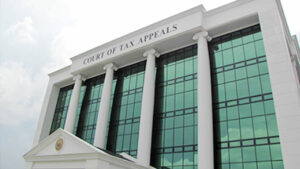Sustainability reporting is not just a casual tick-the-box exercise

The Securities and Exchange Commission (SEC) is expected to require publicly listed companies to submit their sustainability reports next year but several of them are still in a quandary on how to prepare their reports. I sat down with several of these listed companies, and they say they are still at a loss on what to report, how to report, and who will prepare such reports — arguing that they will probably submit the reports out of compliance.
This is very sad. Sustainability reporting should not just be a casual tick-the-box exercise.
Globally, there has been a noted increase in sustainability reporting. In fact, it has become an accepted part of disclosure and transparency initiatives of companies — integrating this with their own financial reporting and disclosure to regulatory agencies and shareholders. More and more companies are reporting their carbon footprint — with the end goal of reducing such in their value chains. Some report on their participation in the greening of economies through various projects that contribute to the protection of biodiversity, promotion of sustainable products, and plastic neutrality among others. There are some that report on their global initiatives on diversity and inclusion, social justice and equality, and community development.
A 2022 survey made by the global accounting, audit, and business advisory firm, KPMG, shows the Asia-Pacific region leads in sustainability reporting with 89% of its companies undertaking sustainability reporting. This is followed by Europe (82%), the Americas (74%) and the Middle East and Africa (56%). Seven Asia-Pacific countries, territories, and jurisdictions have sustainability reporting rates higher than 90%: Japan (100%), Singapore (100%), Malaysia (99%), South Korea (99%), Thailand (97%), Taiwan (94%), and Pakistan (91%). The Philippines and Vietnam have a large number of companies reporting — with both recording 87% of their companies undertaking sustainability reporting.
Kristine Aguirre, Partner, Head of ESG KPMG in the Philippines, noted that a key driver for sustainability reporting in the Philippines is that SEC “memorandum circular” that was issued in 2019. The circular supports publicly listed companies to assess and manage the environmental, social, and governance (ESG) aspects of their organization, and measure and monitor their contributions against universal sustainability targets. The Philippine SEC aims to encourage transparency and accountability from companies with this public. She stressed that the Philippine SEC has indicated that it intends to adopt a mandatory approach to sustainability reporting for listed companies, aligned with similar mandatory sustainability reporting requirements in other jurisdictions in the region.
In the same survey, KPMG disclosed that there are five major trends in sustainability reporting.
One trend is that sustainability reporting grows incrementally with movement towards the use of standards framed by stakeholder materiality assessments. According to the survey, the rates of sustainability reporting among the world’s leading 250 companies are at an impressive 96%. It noted that while there is still a need for global consistency in ESG reporting, the most dominant framework being used is the Global Reporting Initiative framework, with some regions preferring the Sustainability Accounting Standards Board framework. Interestingly, the survey finds that most companies use materiality assessments.
The second trend is the increased reporting on climate-related risks and carbon reduction targets, in line with Task Force on Climate-related Financial Disclosure. The survey shows that nearly three-quarters of companies report their carbon targets, although 20% do not disclose any link to an external target such as a 1.5 °C scenario. The third trend is the growing awareness of biodiversity risk. According to the survey, companies now acknowledge biodiversity risk.
Interestingly, the fourth trend is that the UN SDG reporting prioritizes quantity over quality. Based on the results of the survey, majority of companies report on SDGs, with 10% of companies reporting against all 17 SDGs. The most popular SDGs being used by companies are SDG 8: Decent Work and Economic Growth; SDG 12: Responsible Consumption and Production; and SDG 13: Climate Action.
Finally, the fifth trend is that climate risk reporting is the most acknowledged issue being reported on by companies. It is followed by social and governance risks. According to KPMG, there has been a marked improvement in the number of companies that acknowledge climate change as a risk to their business. However, less than half of companies report on social and governance risks to their business. In general, the description of these risks is overwhelmingly narrative-driven and do not quantify the financial impact of these risks on companies or on society.
While there is a growing acceptance of sustainability reporting as part of the overall disclosure framework for all listed companies, there is still a need for information and education campaigns that the Philippine SEC needs to undertake to enable listed firms to fully understand the value of this type of report.
And this must begin with the most basic question — What really is sustainability reporting?
To keep it simple, sustainability reporting is the disclosure of ESG goals. It also includes the communication of a progressing state towards these objectives. In other words, beyond simply communicating the company’s sustainability ambitions, the organization takes stock of the action plan implemented to reach its targets.
In the preparation of the sustainability reports, or what others term as ESG reports, there is a need to define what the ESG goals are. Environmental, social, and governance goals are defined according to specific criteria, which are also called ESG criteria. Environmental, social, and governance criteria refer to a set of standards that investors can use to screen potential investments. The idea is to allow them to differentiate projects, in order to invest their money in those which turn out to be socially and environmentally conscious.
To be more specific, the environmental part considers how a company performs in an ecological way; the social part pays attention to relationships management with employees, suppliers, customers, as well as all the communities concerned with companies’ operations; and the governance part analyzes the company’s leadership, internal controls, audits, etc.
And the benefits of sustainability reporting? There are a lot.
The benefits include better risk management, costs and savings optimization, decision-making facilitation, and improved corporate confidence and reputation — toward customers as investors. Simple perusal of management literature will show that there are several benefits when companies conduct sustainability reporting. According to scholars, sustainability reporting ensures regulation compliance; companies become more attractive to customers; they attract better talent; build employee pride and loyalty; become more attractive to investors; and they increase transparency, credibility, and accountability to stakeholders and shareholders. At the same time, sustainability reporting is seen as a useful risk management tool, it can help generate savings, it helps in better decision-making, and it helps in increasing stakeholder trust.
Indeed, reporting on ESG goals is very logical business strategy. As social and environmental concerns imply future business threats, investing time and resources into sustainability solutions may allow any company to meet challenges. In other words, sustainability reporting is a way to strengthen long-term strategy of enterprises.
Ron F. Jabal, APR, is the chairman and CEO of PAGEONE Group (www.pageonegroup.ph) and founder of Advocacy Partners Asia (www.advocacy.ph).




